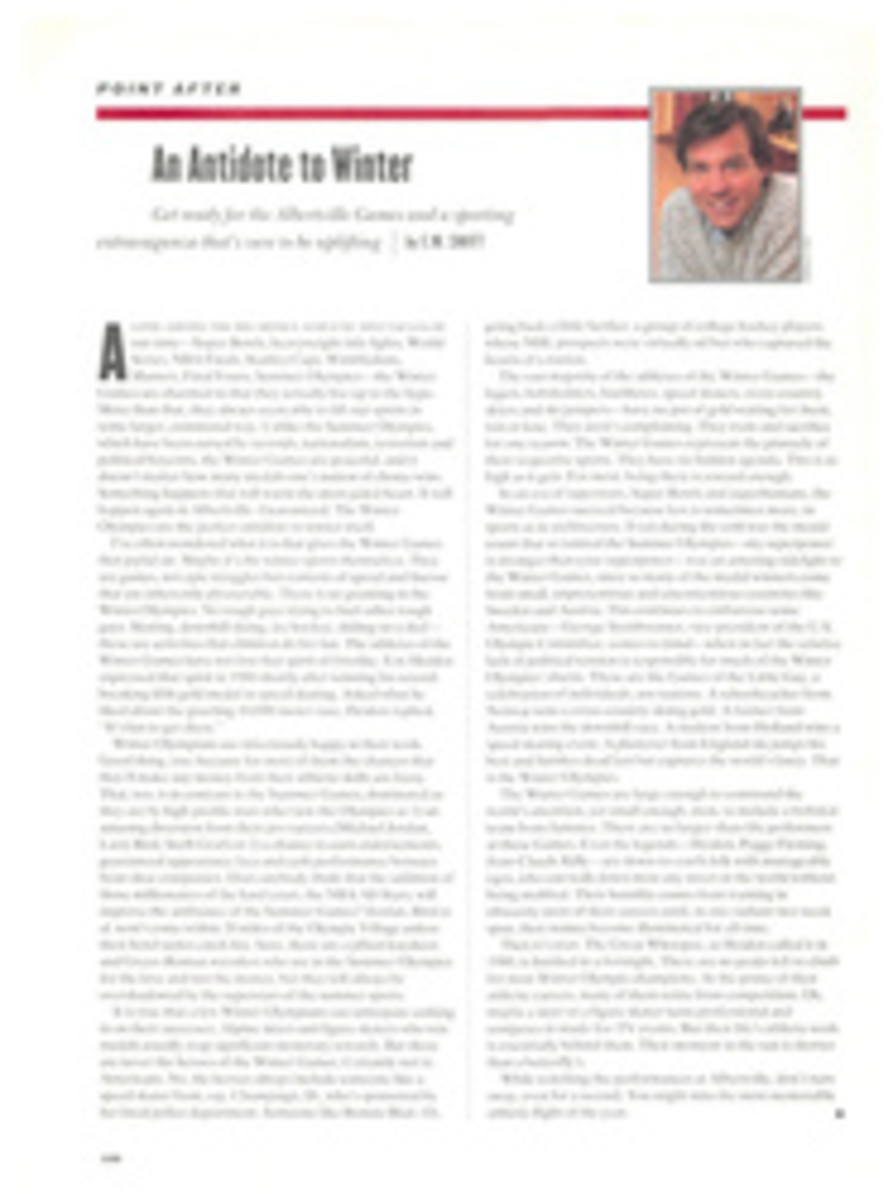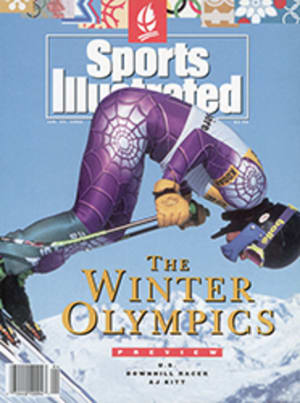
In the Aftermath of Steroids
Take it away,Steve Courson: "Preparing for the Bucs' April minicamp, I began my mostserious cycle yet: a weekly regimen of 4 cc testosterone cypionate, 4 ccWinstrol V, 4 cc Deca-Durabolin, and 4 cc liquid Diana-bol. I knew that it wasa lot, but it seemed worth the risk.... My intention was to enter the '85season at 285 pounds-able to bench press more than 600 pounds, squat about 850,and dead lift about 900."
That unfitnessregimen is recounted in Courson's new book, False Glory (Longmeadow Press,$19.95). Courson, who used muscle-enhancing anabolic-androgenic steroidsthroughout his eight-year career as an offensive lineman for the PittsburghSteelers and Tampa Bay I Buccaneers after discovering them while playing atSouth Carolina, writes that by 1985 he had built himself into a bizarrelyshaped "chemically augmented athlete." He had a 38½-inch waist, a58-inch chest, 20½-inch biceps and a neck just a wisp short of being 23 inchesaround. He was one of those NFL linemen who keep their bulging arms exposed incold weather, a guy who looked as if he had swallowed an airhose after settingthe gauge at 100 pounds per square inch. He had two Super Bowl rings and hadbeen named an alternate to the 1982 Pro Bowl.
But then he gotsick. In 1985 his resting pulse was measured at more than 150 beats per minute,his electrocardiogram showed signs of atrial fibrillation, and his steroid usewas out of control. Still, he played on. And cycled on.
Even after TampaBay released him in '86, Courson kept guzzling the steroids. Fully juiced, hebenched 605 pounds in a powerlifting meet in 1988. "By the day of thecontest," he writes, "I was at the end of a sixteen-week cycle, havingingested or injected substantial doses of Dianabol, Anavar (both orals),Deca-Durabolin, testosterone enanthate, and testosterone propionate (oil-basedinjectables) before capping it off with some human chorionicgonadotropin."
Less than threemonths later he landed in intensive care at a Pittsburgh hospital, diagnosedwith dilated cardiomyopathy, an enlarged heart that lacked the ability to pumpnormally because of lost muscle fibers. What irony—at age 33 the strongman wasdying because of a flabby muscle. He needed a new heart. Now, three yearslater, he still does, and he waits for the phone call that may not come soonenough, the one that tells him a donor has been found.
This book isCourson's reflection on a sporting life gone awry, a heartfelt, if you will,attempt by a former prince of machismo to figure out why he did so many crazythings to play the game of football. Of course, Courson now has the time formusings on his former steroid use, binge drinking and tunnel vision. He is weakand can exercise only cautiously. He does not have his college degree and haslost much of his career earnings in bad business deals. He has been through thefire, gotten burned and wants to tell us that the flames are hot.
Can we learnanything from this? Maybe, maybe not. The sad truth is we've heard it allbefore. Football is brutal. It consumes its players, who are puppets todictatorial coaches (in Courson's case, the Steelers' icily distant ChuckNoll), and it leads players to pursue unethical and self-destructive behaviorin an attempt to delay that moment when the coach tells them that it's time toget on with the rest of their lives.
Courson gobbledsteroids and kept almost 300 pounds on his . 6'1" frame so that he could ;continue, as he says, "to perform in a sport that I would have played fornothing." He knew the drug-taking was wrong and unhealthy, but everyoneelse was doing it, he claims, so why not? "Without naming names,"writes Courson, "I can state unequivocally that during my time inPittsburgh 75 percent of the Steeler offensive line took anabolic-androgenicsteroids at one time or another.... The fact is, our AAS usage was thesame—give or take—as most NFL teams at that time."
Most NFL players,however, don't end up needing new hearts. And there's the rub. What madeCourson sick? The steroids? The drinking? Genetics? Stress? He doesn't know,and neither do his doctors. It would be easy for Courson to hang all his woeson his steroid-taking and a venal NFL that for years virtually encouraged suchbehavior. But he doesn't. And that may be his most manly act—acknowledging hisown culpability. Steroids may lead to his death, but they also made it possiblefor Courson to play with the big boys. "That's the tragedy," he writes."There's no glory dying for a sport."
ILLUSTRATION
HENRIK DRESCHER

